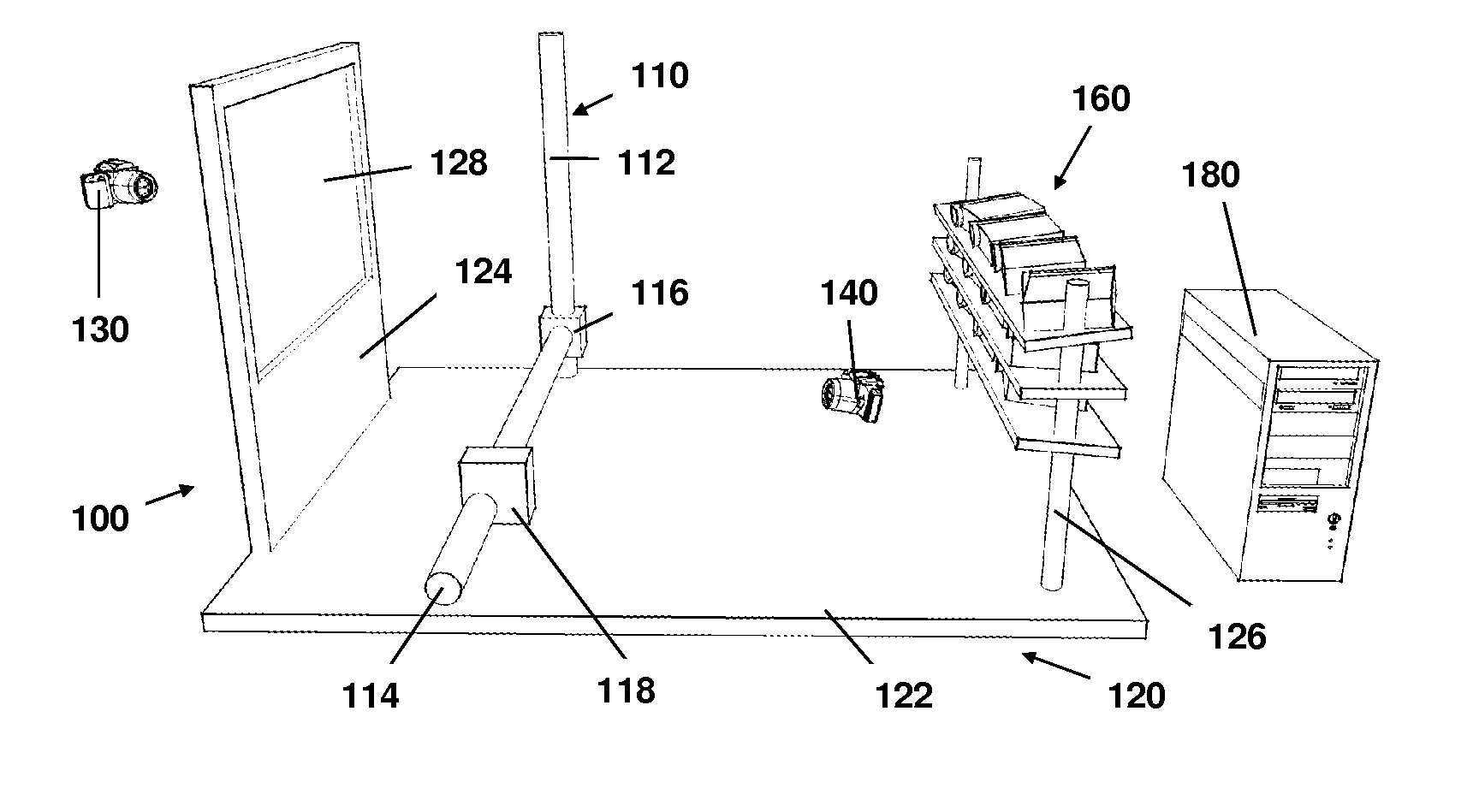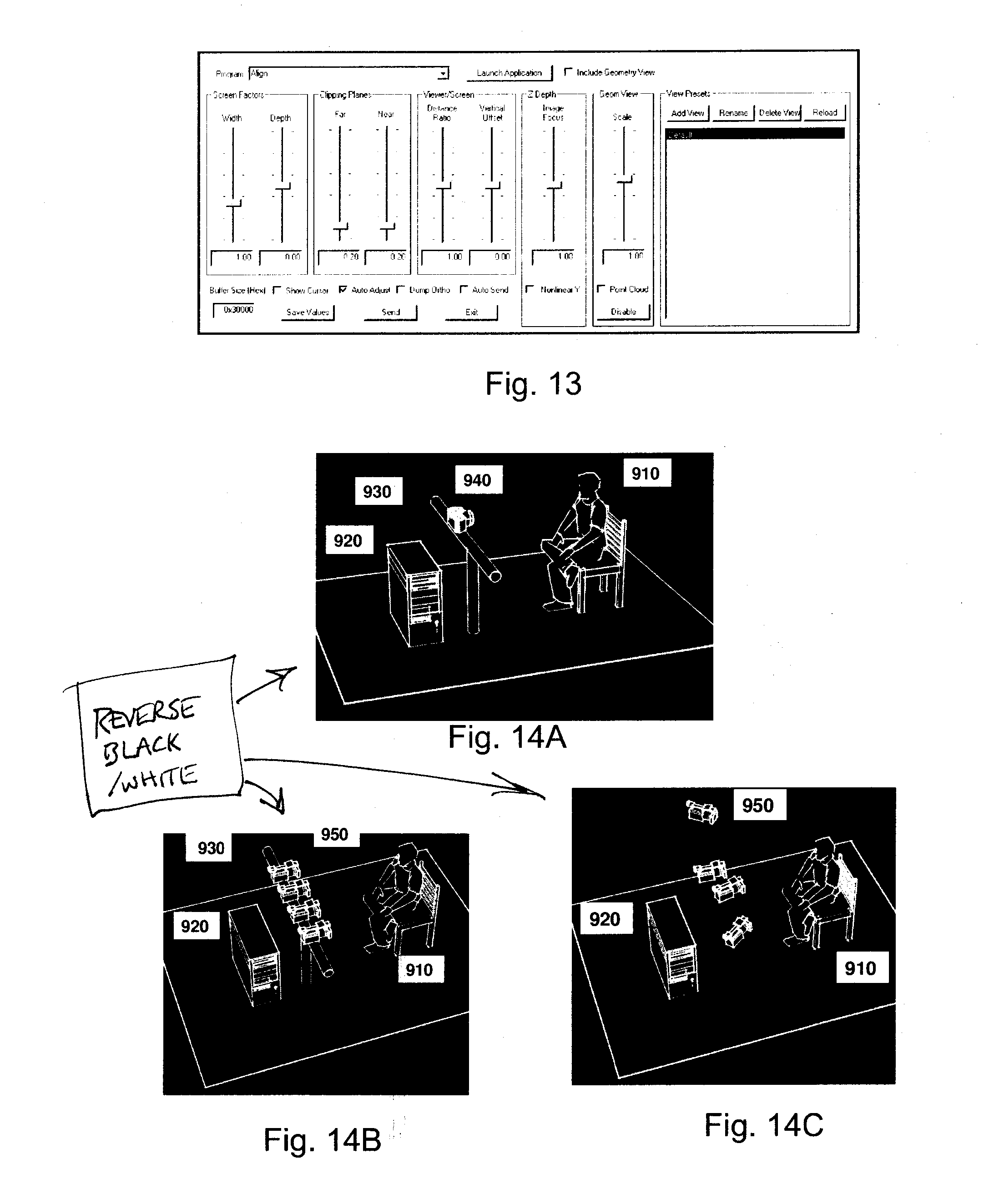Systems and Methods for Alignment, Calibration and Rendering for an Angular Slice True-3D Display
a technology of true 3d and system and method, applied in image analysis, image enhancement, instruments, etc., can solve problems such as distortion of the aspect ratio of objects away from the plane of focus of true 3d
- Summary
- Abstract
- Description
- Claims
- Application Information
AI Technical Summary
Benefits of technology
Problems solved by technology
Method used
Image
Examples
first embodiment
Operation—First Embodiment
[0048]The flowchart 200 in FIG. 2 shows the steps for the alignment, calibration and rendering of 3D imagery using the display 100 from FIG. 1C. The first step in the operation is the alignment and calibration step 210. A more detailed flowchart of step 210 appears in FIG. 5A. An initial step 500 is to estimate the 3D angular geometry of the display 100. shown in FIG. 1A. Then a loop 212 is setup in the FIG. 1A computer 180 to cycle through each of the projectors 160. The loop 212 first performs a step 600 to measure the pixel alignment. This step uses the FIG. 1A camera 140 and the FIG. 1B pattern screen 129 to align with sub-pixel accuracy the projected images of the FIG. 1A projectors 160 to satisfy the FIG. 3A angular slice geometry 30. The loop 212 in step 700 next measures the intensity and color of angular slices using the camera 140 of FIG. 1A. This step measures the intensity and color variations that occur due to mismatches across the projectors 1...
PUM
 Login to View More
Login to View More Abstract
Description
Claims
Application Information
 Login to View More
Login to View More - R&D
- Intellectual Property
- Life Sciences
- Materials
- Tech Scout
- Unparalleled Data Quality
- Higher Quality Content
- 60% Fewer Hallucinations
Browse by: Latest US Patents, China's latest patents, Technical Efficacy Thesaurus, Application Domain, Technology Topic, Popular Technical Reports.
© 2025 PatSnap. All rights reserved.Legal|Privacy policy|Modern Slavery Act Transparency Statement|Sitemap|About US| Contact US: help@patsnap.com



